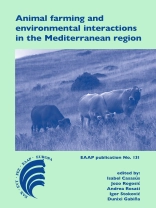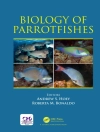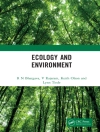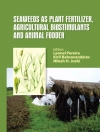Livestock production systems are the result of an interaction between domestic animals and the environment, modulated by man, that dates back to Neolithic times. As a consequence of this interaction among the wide diversity of animal resources, natural habitats and population needs, very different farming systems have developed across the Mediterranean Basin. Understanding the mechanisms and effects of these relationships is key to design the farming systems best adapted to each condition, guaranteeing an adequate balance between target animal production and environmental outcomes provided by these systems. This is indeed a multidimensional topic, influenced by animal genetics, feeding resources, flock management, and economic and social aspects inside and outside the household. Therefore, this book focuses on the basis of the animal-environment interactions and the impact of human activities on the type and magnitude of these interactions. In this context, the issue of sustainability of livestock production is evaluated considering economic, social and environmental aspects. This book contributes to upgrade the state of the art in Mediterranean conditions, providing indicators and procedures of application across a wide range of systems, and hence of interest for researchers, students and professionals concerned with livestock production and the environment.
Jadual kandungan
Foreword.- Part 1. Animal-environment interaction.- New approaches to investigate the genetic basis of animal adaptation to different environments.- Investigation into the presence of genotype by environment (G×E) interactions in Scottish Blackface lamb weaning traits.- Do plant secondary compounds induce epigenetic changes that confer resistance or susceptibility to toxicosis in animals?.- Importance of plants with medicinal properties in herbivore diets.- Ammonia and methane emissions from a dairy farm in Segovia (Spain).- Effects of fennel (Foeniculum vulgare L.) on consumption of two Mediterranean Juniperus species by goats.- Effect of climate change on seasonal performance of feed-lot beef cattle in the west mediterranean region of Turkey.- Influence of temperature-humidity index (THI) on daily production of dairy cows in Mediterranean region in Croatia.- Part 2. Environmental impact of human activities on livestock systems.- Extensive livestock production systems and the environment.- Goat farming and landscape management: from controlled research to controlled grazing.- Sheep production and conservation of wild birds in birds special protection areas in North East of Spain.- Temporal and spatial simulation of vegetation dynamics in a Mediterranean protected mountain area under different farming management scenarios.- The possibility of utilisation of forest pastures for sustainableanimal production purposes in the West Mediterranean region of Turkey.- Effect of water deprivation during pregnancy and lactation of Barbarine ewes on mammary secretions and lamb?s growth.- Current aspects and recommendations in health management of organic sheep and goat farming in karst areas of Croatia.- Part 3. Environmentally sustainable livestock production.- Indicators of sustainability in pasture-based livestock systems.- Sustainable intensive farming systems.- Geographic indication of animal products and farm animal biodiversity: case of twelve Northern and five Mediterranean Member States of the European Union.- Alpine dairy farming in connection with the Slovenian autochthonous Cika cattle.- Comparison of two rearing systems on productive performance and welfare parameters in Limousine cattle.- Clinical, productive and welfare parameters in Zerasca sheep treated with homeopathy.- Carcass and lamb meat quality from improved Jezersko-Sol?ava flocks in Slovenia.- Control of mycotoxins in feeds by novel more environmental friendly strategies.- Part 4. Interaction animal-water in aquaculture.- Sex ratio of Phoxinellus pseudalepidotus Bogutskaya & Zupan?i? 2003 (Teleostei: Cyprinidae), from Mostarsko blato area.- Occurrence and antimicrobial susceptibility of aeromonads from maricultured gilthead seabream (Sparus aurata).- Part 5. Management and production issues of Mediterranean farming systems.- The farm model production in Mediterranean Croatia.-An example of reproduction management in organic sheep farming.- Milk production of crossbred Istrian × East Friesian dairy ewes in Mediterranean region of Croatia.- Reproductive response of Barbarine ewes to supplementation with alternative feed prior to and during mating under semi-arid extensive conditions.- Socio-cultural factors determining roles and responsibilities in traditional cattle production systems within rural communities of Upper Egypt.- Variation of somatic cell count (SCC) of dairy cattle in conditions of Mediterranean region in Croatia.- Lactation characteristics of Littoral Dinaric donkeys in an extensive pasture system.- Some factors affecting piglet survival.- Buckwheat (Fagopyrum esculentum) as partial replacement of corn and soy in the laying hen diet.- Author index.












